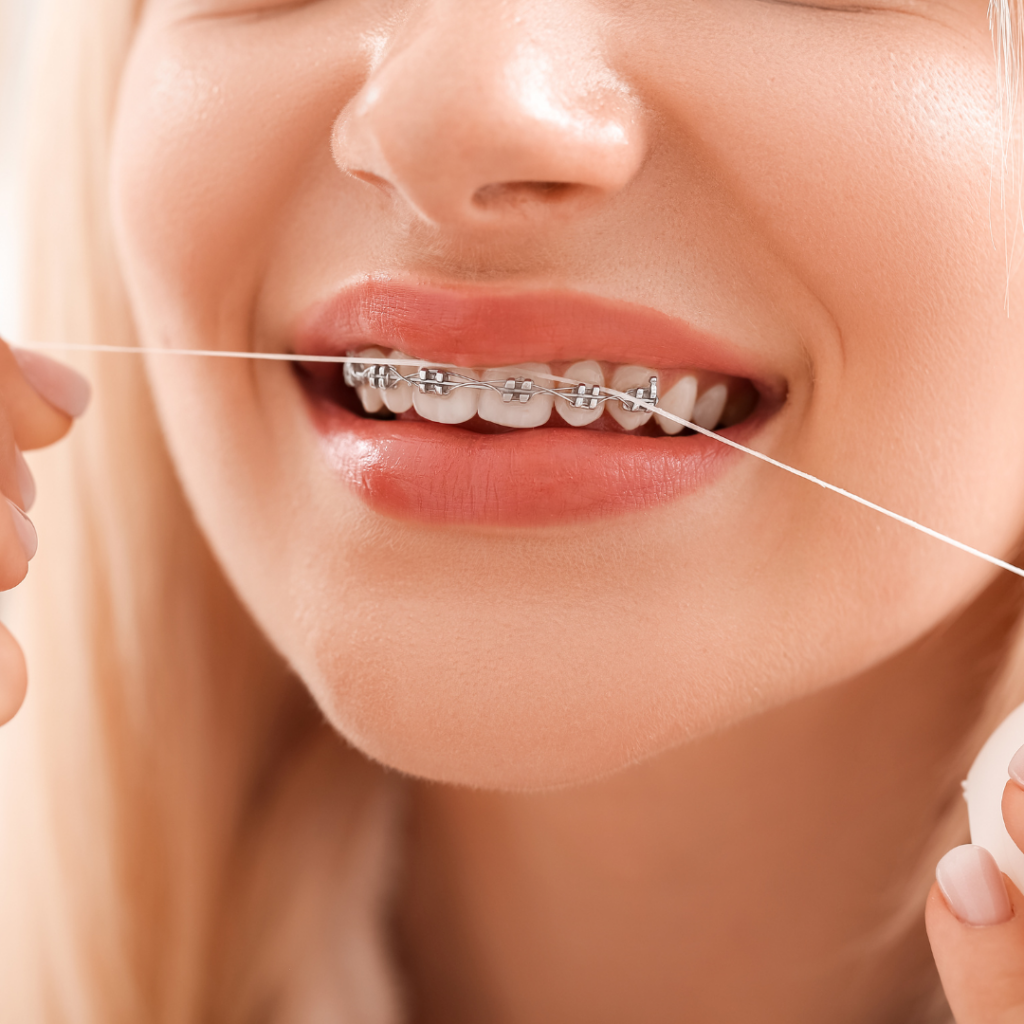
Ensuring proper dental hygiene is crucial for maintaining optimal oral health. While brushing your teeth twice daily is essential to any dental care routine, flossing should not be overlooked as it helps remove plaque and food particles between your teeth and under your gum line.
However, many must realise the importance of flossing or learn to floss correctly. This article will discuss the proper techniques for flossing teeth and why they are important for maintaining healthy gums and teeth.
Flossing can be a challenging task that requires patience and attention to detail. It involves using a thin piece of string, or dental floss, to clean between your teeth where toothbrush bristles cannot reach.
Flossing can help prevent tooth decay, gum disease, and bad breath when done correctly. Knowing how to floss properly can make all the difference in achieving optimal oral health. So, let’s dive into some tips on effectively flossing your teeth to ensure you’re doing everything possible to keep your smile healthy and bright!
Flossing is a crucial aspect of maintaining proper oral hygiene. Improved gum health is one of the many benefits of regular flossing.
You should use proper flossing techniques to get the most out of flossing. The benefits of proper flossing techniques include improved gum health and fresher breath, and reduced risk of cavities and gum disease.
Before using dental floss, it is essential to prepare it for use.
In addition to proper flossing techniques, dental hygiene habits also play a crucial role in maintaining oral health.

By following these habits, daily oral hygiene routines can save long-term costs by avoiding costly dental procedures.
Flossing material options include waxed and unwaxed floss, which can come in various flavours, such as mint or cinnamon.
Flossing tool varieties, such as traditional string floss or floss picks, can make the process easier for those with limited dexterity.
Flossing frequency suggestions vary depending on individual needs, but flossing at least once daily is generally recommended.
Flossing aid devices such as water flossers or soft picks can provide a gentler cleaning experience for sensitive teeth.
Selecting the appropriate tools and materials for your unique needs can make flossing more effective and comfortable.
Flossing the back teeth is an important part of daily oral hygiene. It is recommended to use a gentle sawing motion to move the floss between teeth and below the gum line.
Flossing the front teeth is best achieved using an up-and-down motion.
For those with braces, it is important to gently work the floss under the main archwire and between the brackets and teeth. To floss effectively around braces, an angled floss threader may be used to help hold the floss in place.
The threader can insert the floss between the brackets and the teeth.
Flossing aids such as interdental brushes, water flossers, and holders may also help clean around braces.

Flossing the back teeth can be challenging, but it can be done effectively with the right technique and tools.
Always take your time and be thorough when flossing all areas of your mouth for optimal oral health.
Proper oral hygiene is essential for overall health, and flossing is crucial in preventing gum disease and tooth decay.
While we have discussed effective flossing techniques for the back teeth, it is equally important to address the front teeth.
Flossing frequency should be at least once daily to remove plaque buildup between teeth. Using floss picks or water flossers can make the process easier, but traditional string floss can also be used with proper posture and pressure.
Your dental hygiene routine will enhance oral health with consistent practice, proper technique, and adequate duration (2-3 minutes).
Flossing around braces can be challenging due to the hardware in the mouth. Traditional string floss may not be effective, and it can become tangled or stuck on brackets and wires.

Fortunately, flossing alternatives and orthodontic flossing tools are available to make braces care easier. Floss threaders allow you to guide floss underneath wires, while interdental brushes can clean hard-to-reach areas between brackets. Water flossers are also a popular option, as they use water to remove plaque and debris.
Proper technique with these flossing accessories is crucial for preventing gum disease and tooth decay during orthodontic treatment.
This video also explains in depth how to floss with braces:
Flossing is an important part of oral hygiene. However, it is easy to make mistakes while flossing.
Not going deep enough can be problematic, as food particles can become lodged between teeth.
Skipping areas can lead to missed plaque, food particles, cavities, and bad breath.
Pulling too hard can cause gum damage, and it is important to use gentle pressure while flossing.
Another mistake is using the same flossing motion in all areas.
It is important to use a gentle sawing motion to reach the tight spaces between teeth.
Finally, forgetting to floss is a common mistake, and it is important to floss at least once daily.
One common mistake people make while dental flossing is not going deep enough between their teeth. This can lead to plaque buildup and other dental problems.
To avoid this, it’s important to use the proper pressure and technique when flossing. If you have gum sensitivity or find it difficult to reach certain areas, consider using floss holders or other interdental cleaners.
You can maintain good oral hygiene and prevent potential issues by flossing your teeth properly.
Common mistakes while flossing can lead to various dental problems, and skipping teeth is one of them. Overlooking the flossing gaps or tricky spots between your teeth can cause plaque buildup and gum disease.
It’s essential to understand that skipping areas during flossing is a bad idea. To ensure consistency and better results, it’s necessary to use some effective solutions, such as using interdental cleaners like water picks or soft picks for hard-to-reach areas.
Flossing hacks, such as using a mirror to see the gaps or wrapping the floss around your fingers properly, can also help. By following these tips, you can avoid common mistakes while flossing and maintain good oral hygiene effortlessly.
Preventing damage to your gums and teeth is crucial while flossing and pulling too hard is one of the most common mistakes people make. This can result in sensitivity issues, bleeding gums, and even gum recession.
However, there are alternative techniques that can prevent these issues. Using flossing aids like a water pick or interdental brush can provide gentle pressure for those with sensitive teeth or gums.
It’s also essential to use a proper technique while flossing by using a back-and-forth motion instead of forcing the floss between your teeth.
By following these tips, you can ensure that you’re maintaining good oral hygiene without causing any harm to your mouth.
Establishing a routine is crucial when it comes to making flossing a habit.
Consistency in your daily schedule can help you remember to floss regularly.
One way to help you remember to floss is to place it next to your toothbrush or set the alarm on your phone.
Staying motivated to floss regularly can be tough, but remembering the benefits, like preventing bad breath and gum disease, can keep you on track.
Tracking progress by recording how often you’re flossing can also help encourage consistency.
Overcoming obstacles like forgetting to floss or feeling too tired can be difficult, but incorporating it into your daily routine and sticking with it will eventually make it second nature.
In addition to establishing a routine and finding motivation, several flossing aids and devices can make the process easier.
Floss picks, for example, have become increasingly popular due to their convenience and ease of use.
Water flossers are another alternative that can be particularly helpful for those with braces or sensitive gums.
Floss threaders can also be used to navigate around dental work or tight spaces in between teeth.
Adopting flossing hacks, such as using a mirror or holding the floss at a 45-degree angle, can make the process more efficient.
Individuals can overcome obstacles and create sustainable flossing habits using these tips and alternatives.
Flossing is an essential part of maintaining good oral hygiene. It helps remove plaque and food particles between teeth, preventing bacteria buildup that can lead to tooth decay and gum disease.
Choosing the right type of floss, preparing it for use correctly, and using the proper technique are all critical components of effective flossing.
It is also important to avoid common mistakes such as snapping the floss too hard against the gums or skipping certain areas of the mouth.
With a little effort, flossing can become a daily habit that promotes healthy teeth and gums. By making it a regular part of your oral care routine, you can achieve optimal oral health and prevent future dental problems.
For more content on oral health, visit our dental hygiene resources page.